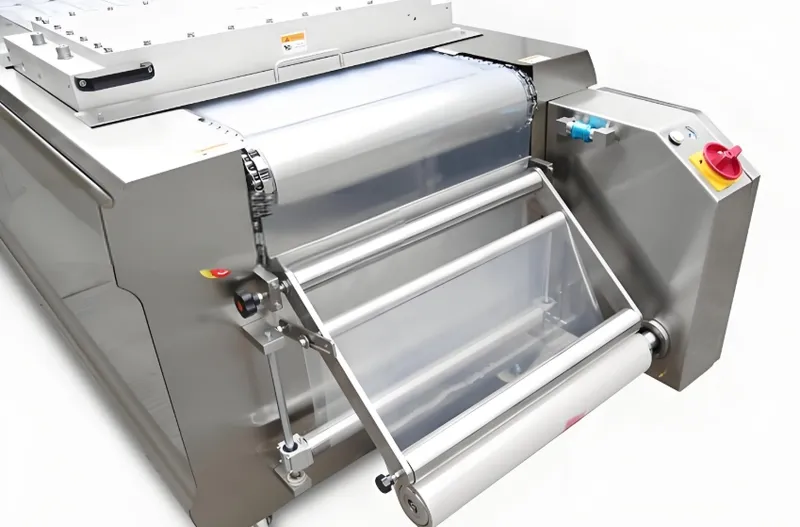
Thermoforming machines are essential in modern manufacturing, enabling the production of precise, durable plastic products by heating and shaping thermoplastic sheets, commonly used in industries like packaging, automotive, and medical.
Understanding the thermoforming process and its applications is crucial for leveraging its benefits in various industries. This guide explores thermoforming machines, their materials, processes, influencing factors, applications, and how they compare to injection molding.
Thermoforming is a versatile manufacturing process.صحيح
It can produce both lightweight packaging and robust structural components, making it suitable for diverse applications.
Thermoforming is only used for small-scale production.خطأ
Thermoforming is efficient for both small and large production runs, depending on the machine and setup.
- 1. What is a Thermoforming Machine?
- 2. ما هي المواد الشائعة المستخدمة في التشكيل الحراري؟
- 3. ما هي خطوات عملية التشكيل الحراري؟
- 4. What are the Key Factors in the Thermoforming Process?
- 5. ما هي تطبيقات التشكيل الحراري؟
- 6. What are the Differences Between Thermoforming and Injection Molding?
- 7. الخاتمة
What is a Thermoforming Machine?
Thermoforming machines are pivotal in industries requiring precise, durable plastic products, enhancing efficiency and reducing costs.
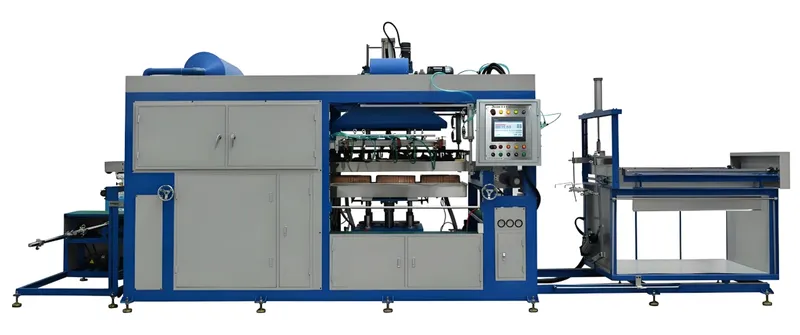
A thermoforming machine heats a thermoplastic sheet until it becomes pliable, shapes it using a mold with vacuum, pressure, or mechanical force, and cools it to retain the form. Different types include vacuum forming, pressure forming, and twin-sheet forming, each tailored to specific needs.
| Thermoforming Type | الوصف | التطبيقات |
|---|---|---|
| التشكيل بالتفريغ | Uses vacuum to shape the sheet | التعبئة والتغليف، الصواني |
| التشكيل بالضغط | Applies additional pressure for detailed parts | Complex shapes, enclosures |
| التشكيل بالصفائح المزدوجة | تشكيل ورقتين في وقت واحد للأجزاء المجوفة | Containers, panels |
التشكيل بالتفريغ
Vacuum forming uses a vacuum to pull a heated plastic sheet over a mold, ideal for simple, large parts like trays. Learn more about the عملية التشكيل بالتفريغ1.
التشكيل بالضغط
Pressure forming adds air pressure for finer details, suitable for complex parts like medical housings, offering enhanced surface quality.

التشكيل بالصفائح المزدوجة
Twin-sheet forming creates hollow parts by forming two sheets simultaneously, used for items like containers and panels.
Thermoforming machines can handle both thin and thick gauge materials.صحيح
Thermoforming is versatile, allowing for the production of both lightweight packaging and robust structural components.
ما هي المواد الشائعة المستخدمة في التشكيل الحراري؟
Thermoforming materials are essential for creating products that are lightweight, durable, and cost-effective, enhancing performance across industries.

Common materials include polystyrene (PS), polyethylene terephthalate (PET), polypropylene (PP), and acrylonitrile butadiene styrene (ABS), each chosen for specific properties.
| المواد | الخصائص | التطبيقات |
|---|---|---|
| البوليسترين (PS) | Rigid, brittle, clear | Disposable cups, food containers |
| بولي إيثيلين تيريفثالات البولي إيثيلين (PET) | Strong, lightweight, recyclable | Blister packs, trays |
| البولي بروبلين (PP) | مرنة ومقاومة للمواد الكيميائية | قطع غيار السيارات والتعبئة والتغليف |
| أكريلونيتريل بوتادين ستايرين (ABS) | متينة ومقاومة للصدمات | Automotive components, housings |
البوليسترين (PS)
PS is valued for its clarity and rigidity, perfect for disposable items, though it’s less impact-resistant.
بولي إيثيلين تيريفثالات البولي إيثيلين (PET)
PET’s strength and recyclability make it a top choice for packaging like blister packs. Explore PET properties2.
البولي بروبلين (PP)
PP’s flexibility and chemical resistance suit it for automotive parts and reusable containers.

أكريلونيتريل بوتادين ستايرين (ABS)
ABS offers toughness, ideal for structural components in automotive and electronics.
PET is a popular choice for thermoforming due to its recyclability.صحيح
PET’s strength, clarity, and recyclability make it ideal for sustainable packaging solutions.
ما هي خطوات عملية التشكيل الحراري؟
The thermoforming process is critical for producing precise, durable products by shaping heated plastic sheets over molds.
The process includes heating, forming, cooling, and trimming, with variations depending on the method used.
التدفئة
The plastic sheet is heated to a pliable state using infrared heaters or ovens, a key step for quality forming.
التشكيل
The heated sheet is shaped over a mold using vacuum, pressure, or mechanical force, determining part detail.

التبريد
The part is cooled with air or water to maintain its shape, preventing warping.
التشذيب
Excess material is removed, finalizing the product, often automated for efficiency.
Proper heating is critical for successful thermoforming.صحيح
Achieving the right temperature ensures the plastic is pliable without degrading, affecting the quality of the final product.
What are the Key Factors in the Thermoforming Process?
The thermoforming process relies on several factors that determine the quality and performance of the final product.
Key factors include temperature, mold design, vacuum/pressure levels, material properties, and cooling rate.

Heating Temperature and Time
Precise heating ensures pliability without degradation, critical for part quality.
تصميم القوالب
Mold shape and finish impact detail and removal ease. See mold design tips3.

Vacuum or Pressure Level
These levels affect how well the plastic conforms to the mold, influencing thickness and detail.
خواص المواد
Thickness and thermal properties dictate forming behavior and part characteristics.
معدل التبريد
Controlled cooling prevents defects like shrinkage, balancing speed and quality.
Mold design significantly impacts part quality.صحيح
The mold’s shape, draft angles, and surface finish determine the detail and ease of part removal.
ما هي تطبيقات التشكيل الحراري؟
Thermoforming offers versatile solutions in manufacturing, contributing to lightweight, durable products across several sectors.
It’s used in packaging, automotive, medical, and more for its efficiency and cost-effectiveness.
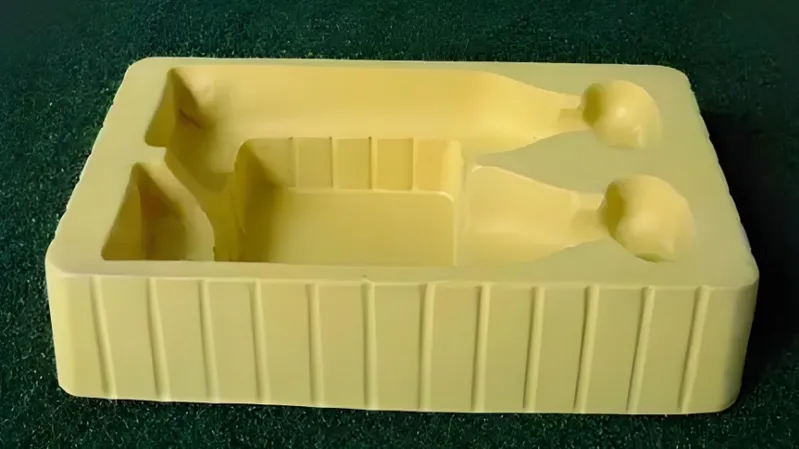
التعبئة والتغليف
Produces items like cups, trays, and blister packs, leveraging thin-gauge materials.
السيارات
Creates dashboards and panels, benefiting from thick-gauge durability. See automotive applications4.

الطب الباطني
Makes sterile trays and housings, meeting precision standards.
الطيران والفضاء
Forms lightweight panels, reducing aircraft weight.
Thermoforming is widely used in the automotive industry.صحيح
Its ability to produce large, lightweight parts makes it ideal for automotive interior components.
What are the Differences Between Thermoforming and Injection Molding?
التشكيل الحراري5 و القولبة بالحقن6 differ in process, cost, and application suitability.
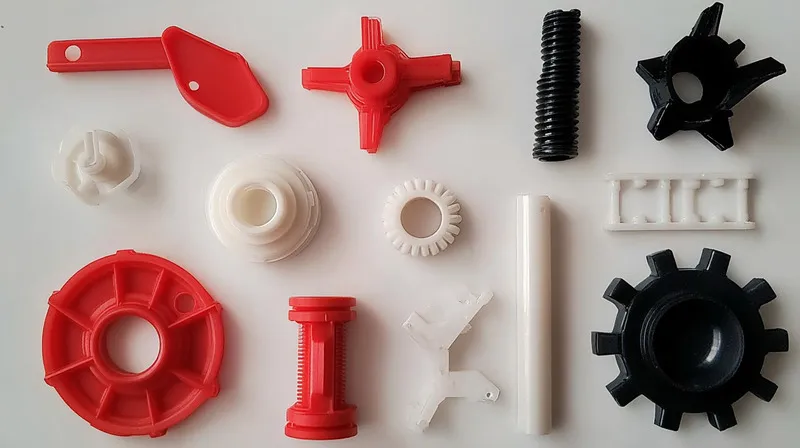
تدفق العملية
Thermoforming shapes a heated sheet over a mold; injection molding injects molten plastic into a cavity.
المبدأ
Thermoforming stretches a sheet, while injection molding fills a mold, affecting part complexity.
خصائص القوالب
Thermoforming suits large, shallow parts; injection molding excels with detailed, 3D shapes.
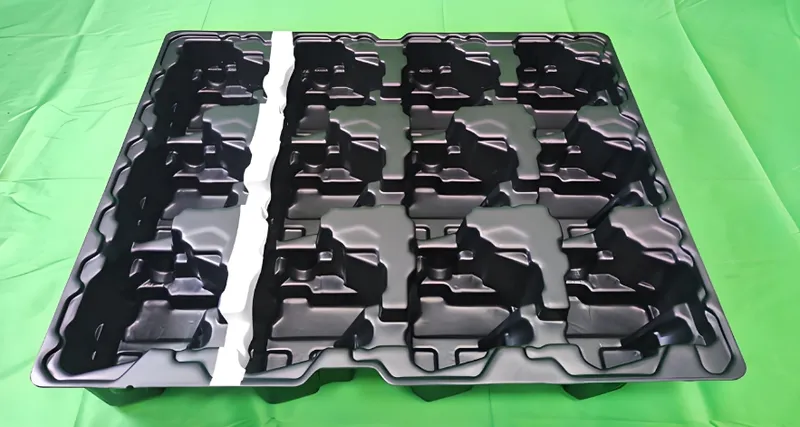
سيناريوهات التطبيق
Thermoforming is cost-effective for low to medium runs; injection molding fits high-volume, complex parts.
المزايا والعيوب
Thermoforming has lower tooling costs; injection molding offers precision for mass production.
Thermoforming has lower tooling costs than injection molding.صحيح
This makes thermoforming more economical for small to medium production runs.
الخاتمة
Thermoforming machines7 are vital for producing diverse plastic products efficiently. By mastering materials, processes, and factors, manufacturers can optimize outcomes for packaging, automotive8, and beyond, offering a cost-effective alternative9 to methods like injection molding.
-
Learn more about vacuum forming techniques and applications. ↩
-
Explore PET’s role in thermoforming and its benefits. ↩
-
Understand how mold design enhances thermoforming quality. ↩
-
Discover thermoforming’s impact in the automotive sector. ↩
-
Explore the benefits of Thermoforming to understand its cost-effectiveness and suitability for various applications. ↩
-
Learn about injection molding to see how it excels in producing complex parts with precision and efficiency. ↩
-
Explore how Thermoforming machines enhance production efficiency and reduce costs in various industries. ↩
-
Discover the applications of Thermoforming in key industries and its impact on product design and functionality. ↩
-
Learn about the advantages of Thermoforming over injection molding and how it can save costs in production. ↩








